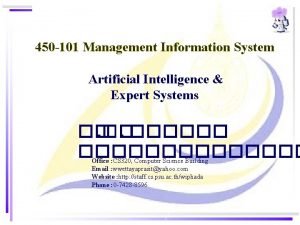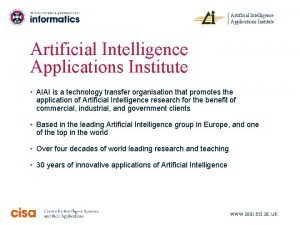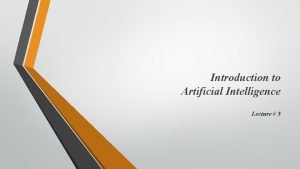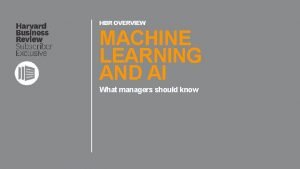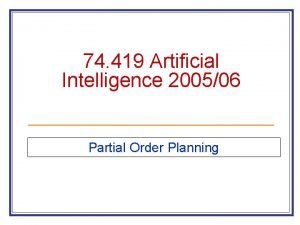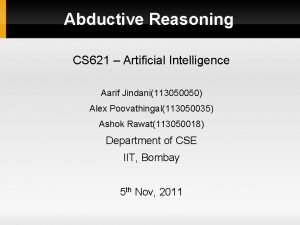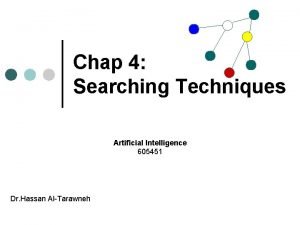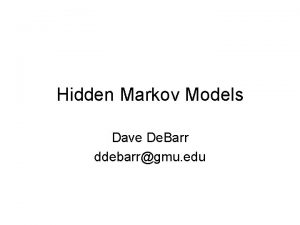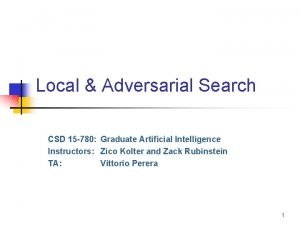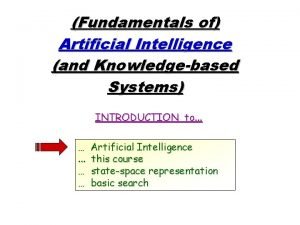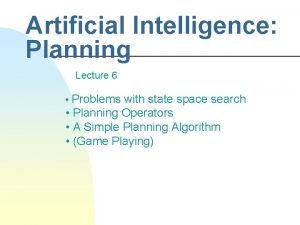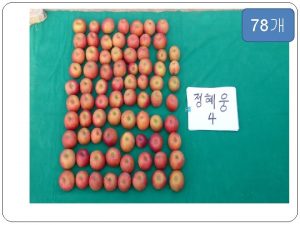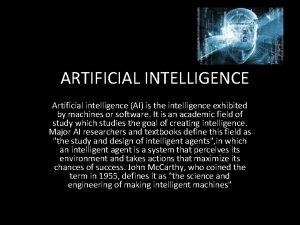What is DNA Computing Shin SooYong Artificial Intelligence















- Slides: 15

What is DNA Computing? Shin, Soo-Yong Artificial Intelligence Lab. Dept. of Computer Eng. Seoul National University

Outline u u u u Introduction The Technology for DNA Computing The Operators of DNA Computing The Merits of DNA Computing Applications The Difficulties of DNA Computing Our Project on DNA Computing Conclusion

The First DNA Computing Approach u In 1994 Leonard Adleman demonstrated the potential of using interactions between DNA molecules to carry out “massive parallelism” in a test tube to solve hard combinatorial problems(Hamiltonian Path Problem) 4 3 1 0 6 2 5

DNA Computing 01101010001 ATGCTCGAAGCT

DNA Computing takes advantage of. . u u u Our ability to produce massive numbers of DNA molecules with specific properties (size, sequence) The natural proclivity of specific DNA molecules to chemically interact according to defined rules to produce new molecules Laboratory techniques that allow the isolation/identification of product molecules with specific properties < PCR, Ligation, Gel Electrophoresis, etc.

The Operators of DNA Computing u DNA Structure < 4 characters l A (Adenine), C (Cytosine), G (Guanine), T (Thymine) < Watson-Crick base-pairing l u A = T, G C Lab Techniques < Hybridization (Annealing) l base-pairing between two complementary single-strand molecules to form a double stranded DNA molecule 5’-AGCATCCATTA-3’ 3’-TCGTAGGTAAT-5’ 5’- AGCATCCATTA -3’ 3’- TCGTAGGTAAT -5’

The Operators of DNA Computing (2) < Ligation l Joining DNA molecules together < Enzymes used in DNA l l Ligase enzyme restriction enzyme

The Operators of DNA Computing (3) < Gel Electrophoresis l molecular size fraction technique < Polymerase Chain Reaction (PCR) l amplifies (produces identical copies of) selected ds. DNA molecules < Affinity Column

Why DNA Computing? u u 6. 022 1023 molecules / mole Immense, Brute Force Search of All Possibilities < Desktop : 106 operations / second < Supercomputer : 1012 operations / second < 1 mol of DNA : 1026 u Favorable Energetics: Gibb’s Free Energy u 1 J for 2 1019 operations Storage Capacity: 1 bit per cubic nanometer u

Applications u u u u u Associative Memory Satisfiability and Boolean Operations DNA Adder Finite State Machines Road Coloring DNA Chip Solving NP-hard problems Turing Machine Boolean Circuits

The Problems of DNA Computing u It takes TOO long times < hybridization/ligation operation over 4 hours < In Adleman’s experiments : 7 days! u Not Perfect Operation < Hybridization Mismatches l l l Mismatched Hybridization Hairpin Hybridization Shifted Hybridization < Extraction Errors < Volume and Mass to solve a problem u u False Negatives False Positives

The Problems of DNA Computing (2) u Encoding Problems < encoding problem is mapping the problem instance onto a set of DNA molecules and molecular biology protocols so that the resulting products contain an answer to instance of the problem < prevent errors < enable extraction

Our Projects u NACST systems < Nucleic Acid Computing Simulation Toolbox < Efficiency and robustness of DNA computing < Molecular Programming (MP): “Evolving” fitter DNA molecules, not just filtering out infeasible ones (as in conventional DNA computing). < To reduce the operation times u Two New Molecular Algorithms < Iterative Molecular Algorithm (i. MA): an “evolutionary” version of simple DNA computing < Molecular evolutionary algorithm with genetic code optimization: i. MA + Genetic Algorithm < To solve the Encoding Problems

NACST sysmtes

Conclusion u u u DNA Computing uses DNA molecules to computing methods DNA Computing is a Massive Parallel Computing because of DNA molecules Someday, DNA Computer will replace the siliconbased electrical computer
 Artificial intelligence devices
Artificial intelligence devices Mobedic
Mobedic Cpsc 322: introduction to artificial intelligence
Cpsc 322: introduction to artificial intelligence Production rule for water jug problem
Production rule for water jug problem Math for artificial intelligence
Math for artificial intelligence Hbr ai and machine learning
Hbr ai and machine learning Total order planning in artificial intelligence
Total order planning in artificial intelligence Artificial intelligence chapter 3
Artificial intelligence chapter 3 Abductive argument
Abductive argument Searching for solutions in artificial intelligence
Searching for solutions in artificial intelligence Best for search
Best for search Artificial intelligence: a modern approach
Artificial intelligence: a modern approach 15-780 graduate artificial intelligence
15-780 graduate artificial intelligence Fundamentals of artificial intelligence
Fundamentals of artificial intelligence Planning in artificial intelligence
Planning in artificial intelligence A fuzzy proposition
A fuzzy proposition
